
From Zero to $9 Billion: Inside the Growth of Cyber ETFs Listed in the U.S.
In case you didn’t know, October is Cybersecurity Awareness Month. So today, we thought we’d take a look at some of the cybersecurity-related exchange-traded funds (ETFs) that now exist, see how they’ve grown, and how they trade.
Cyber ETFs are just one of a growing group of increasingly popular “thematic ETFs.” Thematic ETFs give investors quick access to a diversified basket of stocks with exposure to a specific investment or economic theme.
Over the past seven years, cyber ETFs have grown from zero to $8.7 billion in assets, a compound growth rate of 122%. As of the market close on Oct. 12, there is now over $4.8 billion in the largest cyber ETF, First Trust’s CIBR (CIBR), which tracks an index jointly created by Nasdaq and the Consumer Technology Association (CTA) and trades around $45 million per day.
Cyber index outperformance driven by breaches
It’s probably not surprising that cyber ETFs have seen strong growth, as data shows that cybercrime is increasing, and with that, losses from companies affected by breaches are also growing. Furthermore, other studies show that not only is the global cybersecurity market growing but also that a majority of Chief Information Officers are prioritizing cybersecurity spending for this year, with 61% of the more than 2,000 CIOs surveyed increasing investment in cyber/information security in 2021. This positions cyber as an industry with potential long-term growth and persistent recurring revenues.
Consistent with that, the early performance of CIBR closely tracked the performance of the broader market, with periods of outperformance around data-specific breaches. However, more recently (during the pandemic), it has started to outperform the broader market.
Chart 1: Performance of CIBR vs. S&P 500
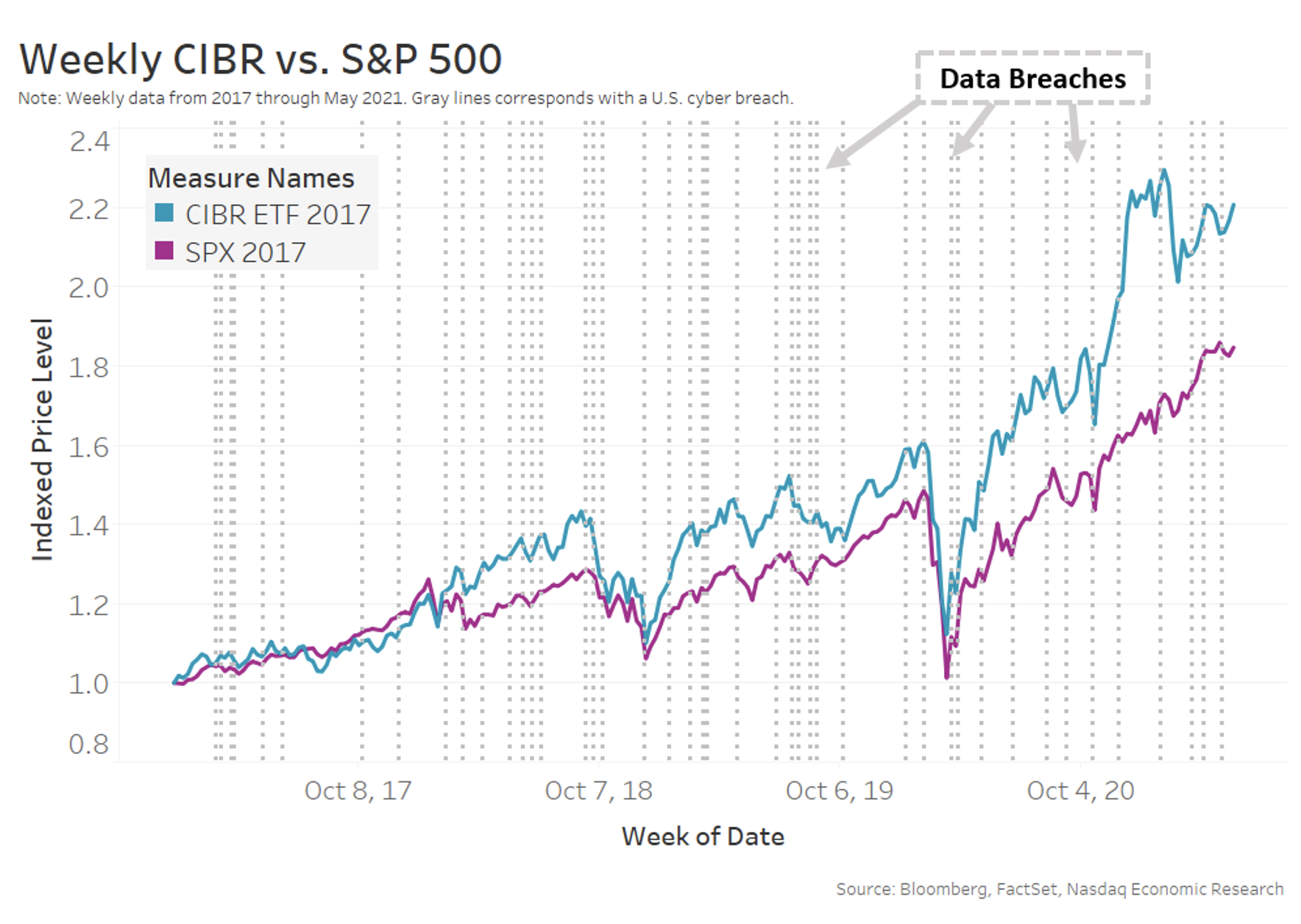
Perhaps not surprisingly, this study also found that Nasdaq’s Cyber Index outperforms the broader market when data breaches occur.
Because of their specific exposures, thematic ETFs are also sometimes used for relatively short-term directional trades associated with specific news (like a breach). For example, the basket of cyber ETFs outperformed in December 2020, which coincided with a breach of U.S. government systems, as investors bet that cybersecurity companies would see demand for their services increase.
Cyber ETF asset growth
Since the first cyber ETF launched in late 2014, by our count, there are seven U.S.-listed ETFs in the cyberspace now (Table 1).
The largest is the $4.8 billion First Trust NASDAQ Cybersecurity ETF (ticker CIBR), launched in July 2015. But with the increasing economic significance of breaches, five newer ETFs have been established in the past 30 months, with some already attracting significant assets.
Table 1: U.S.-listed cyber ETFs
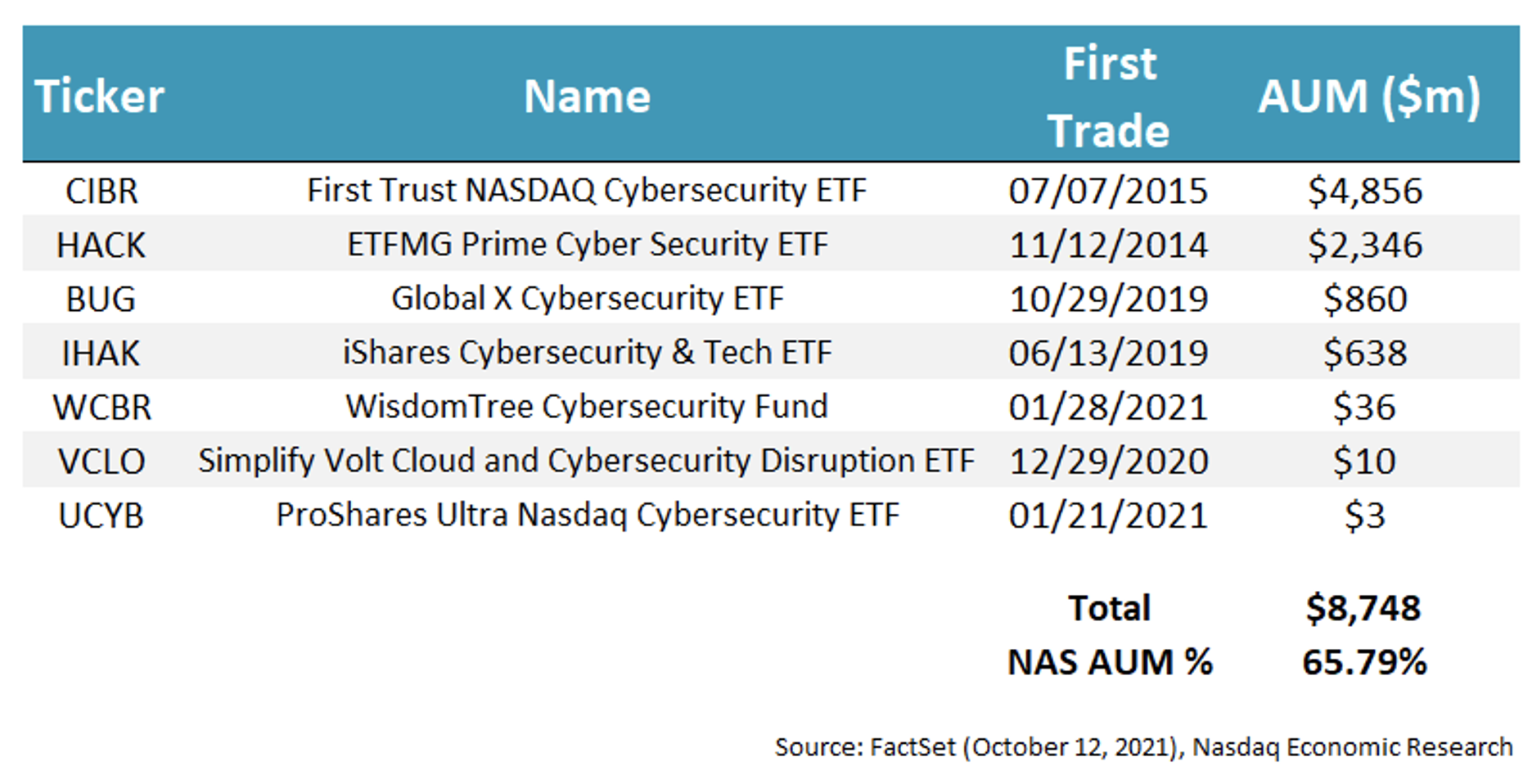
Over the whole seven years, assets in the space have grown rapidly, to $8.7 billion with a compound growth rate of 122% p.a. since the end of November 2014 (Chart 2).
Although, strong inflows have combined with the strong performance during the pandemic, with assets tripling in less than two years.
Chart 2: Accumulated cyber ETF AUM
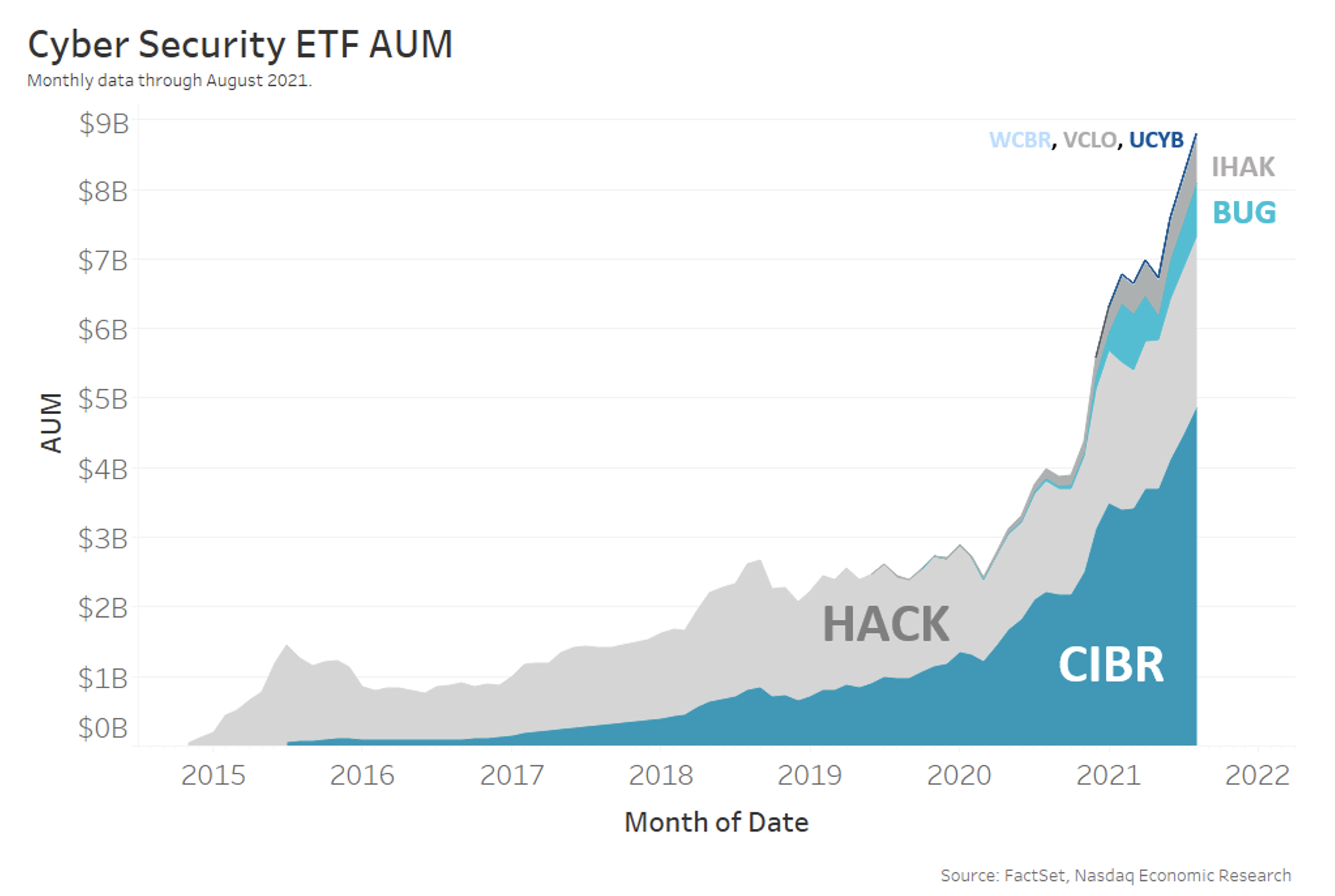
Thematic ETFs have different exposures to a sector ETF
Sector and thematic ETFs have been around for a while. One thing that makes thematic ETFs different is that their holdings are often drawn from multiple sectors, market capitalizations and investment styles.
For example, Chart 3 shows that the Nasdaq CTA Cybersecurity Index offers exposure to multiple sectors that stand to benefit from cybersecurity demand. About three-quarters (76%) of the index is composed of Software and Computer Services, while a quarter of the exposure is spread across Business Support Services, Telecomm. Equipment, Internet and Defense. In addition, CIBR includes foreign companies not included in U.S. indexes.
Chart 3: CIBR ETF Index sector exposure
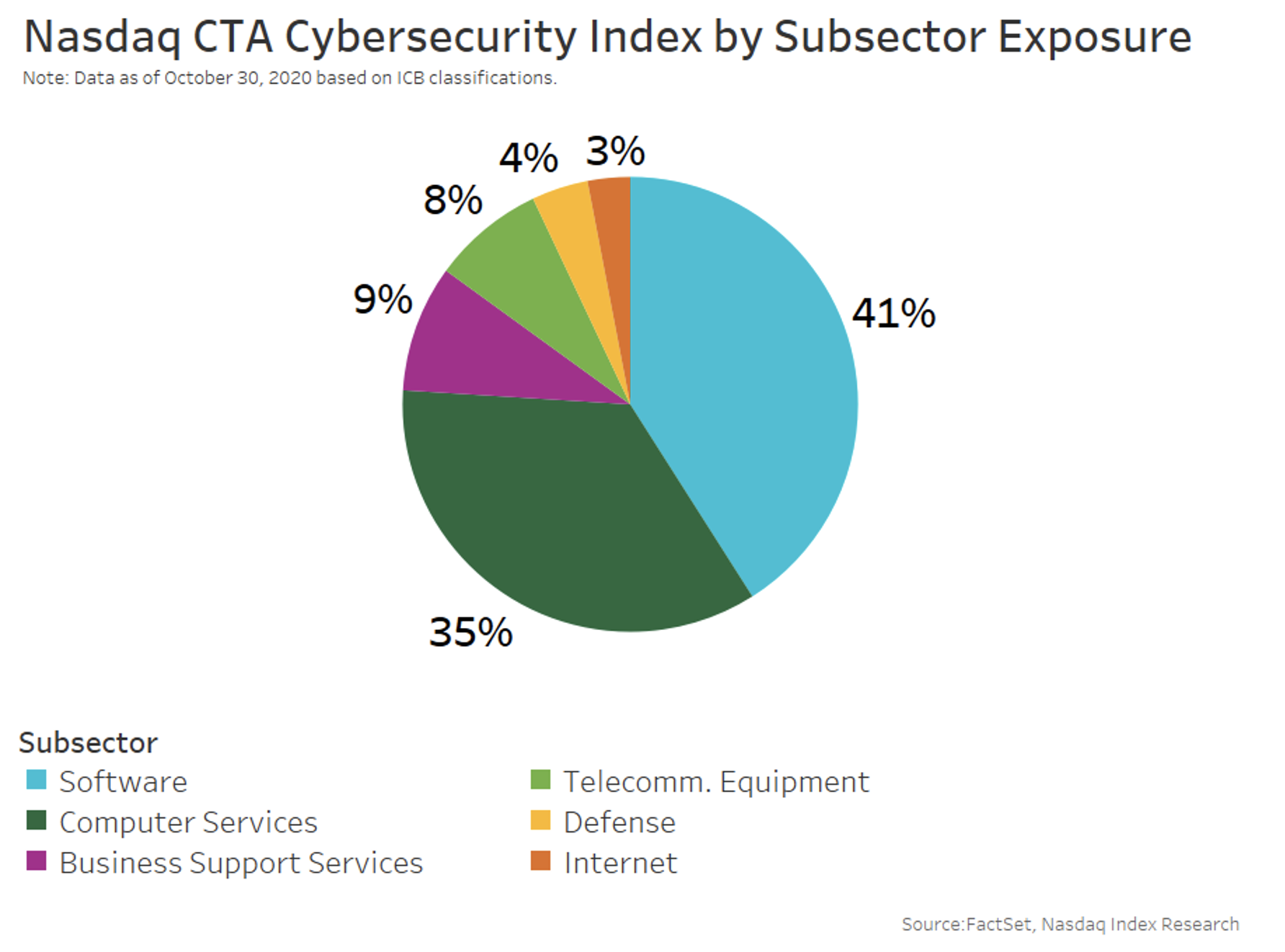
How cyber ETFs trade
For an investor, tradability is also important. Liquidity and tight spreads help reduce trading costs, which boost overall returns.
Data shows that CIBR is the most actively traded ETF, trading over $45 million each day. It also has the tightest spreads at around five basis points (bps) (Chart 4).
Chart 4: Liquidity & Spreads of Cyber ETFs
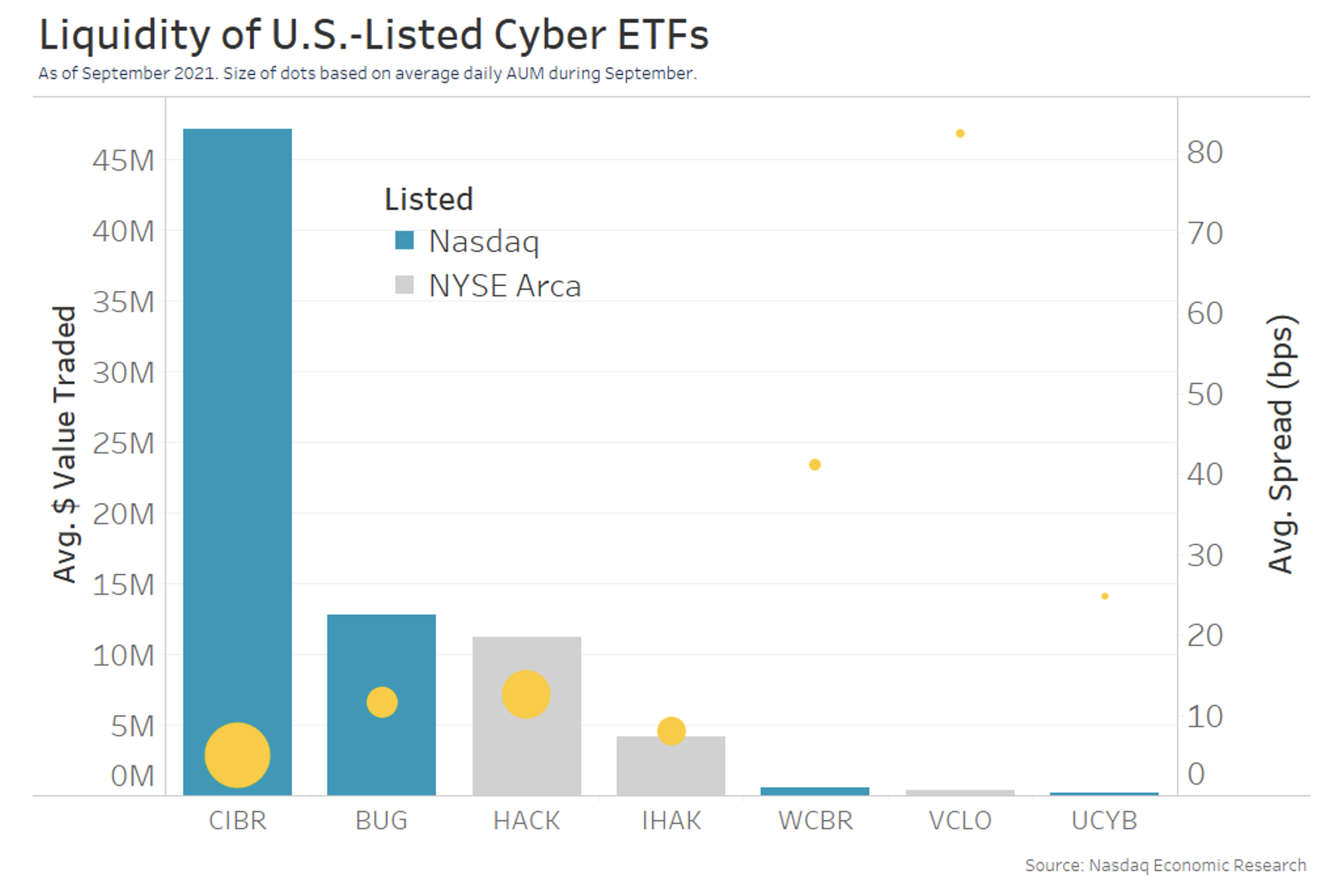
ETF value traded is only half the liquidity story
Looking at all the ETFs in the cyberspace, we see ETF liquidity adds to over $70 million each day with a trade-weighted average spread under 8bps (circle size). That’s still inside the cost of crossing spreads in the underlying stocks, which we estimate at closer to 10bps for CIBR, making the ETF cheaper to trade than the underlying stocks.
Historical liquidity data shows that trading across the complex of ETFs has peaked above $100 million as the pandemic started in 2020, with CIBR typically making up more than 50% of the total (Chart 5).
However, as we’ve said before, the creation and redemption mechanism means all the ETFs in Table 1 can also access underlying liquidity, which is almost always significantly higher. That makes it easy to do large trades in any ticker through a liquidity provider who is also an Authorized Participant.
Chart 5: Growth in cyber ETF liquidity
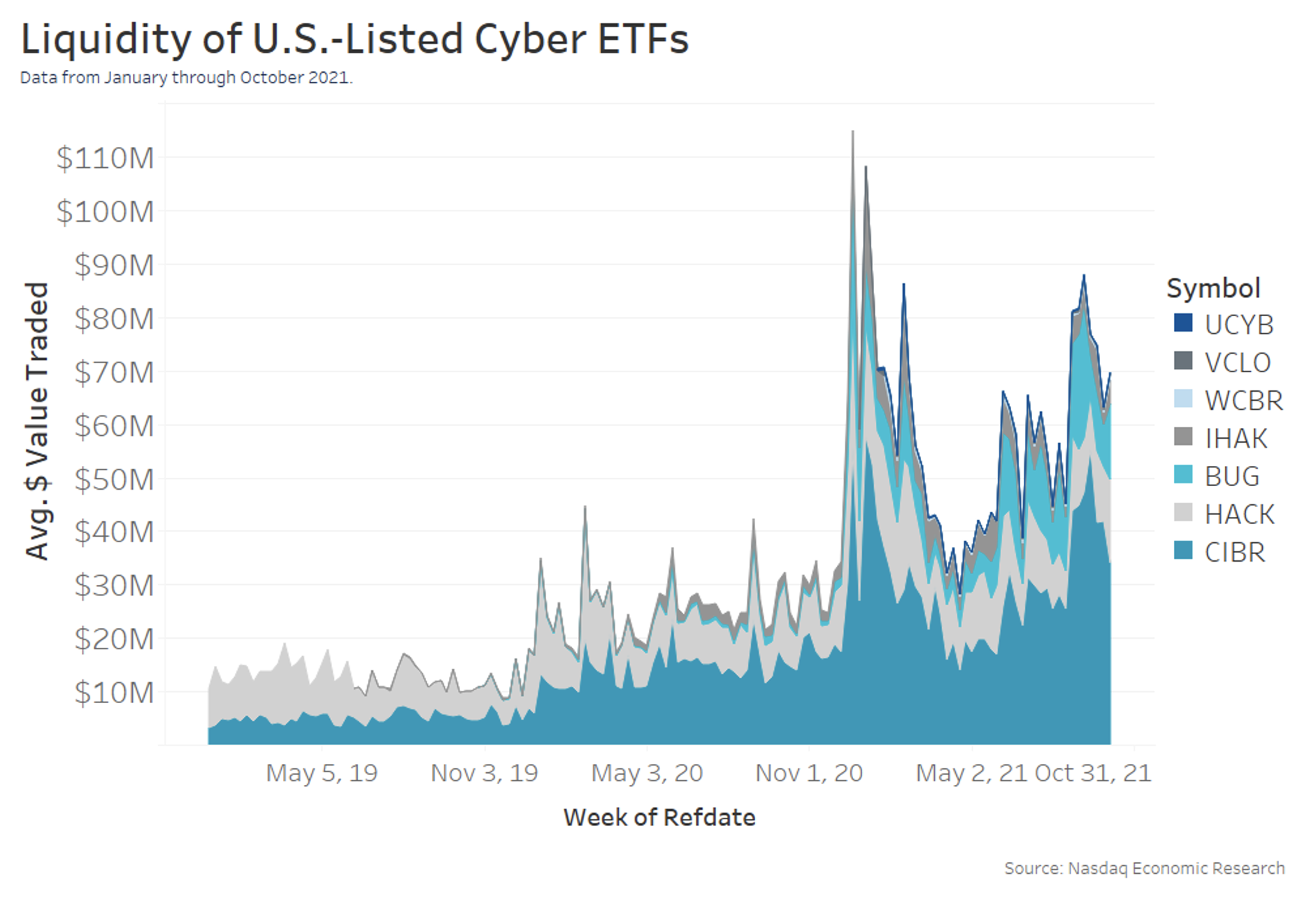
Conclusion
Cyber ETFs are yet another way that investors can quickly, cheaply and easily gain access to a diversified portfolio of companies with exposure to just one theme.
As we round out Cybersecurity Awareness Month, it’s good to be aware of the growth and popularity of cyber ETFs that align with a threat that, sadly, seems unlikely to quickly fade away.
